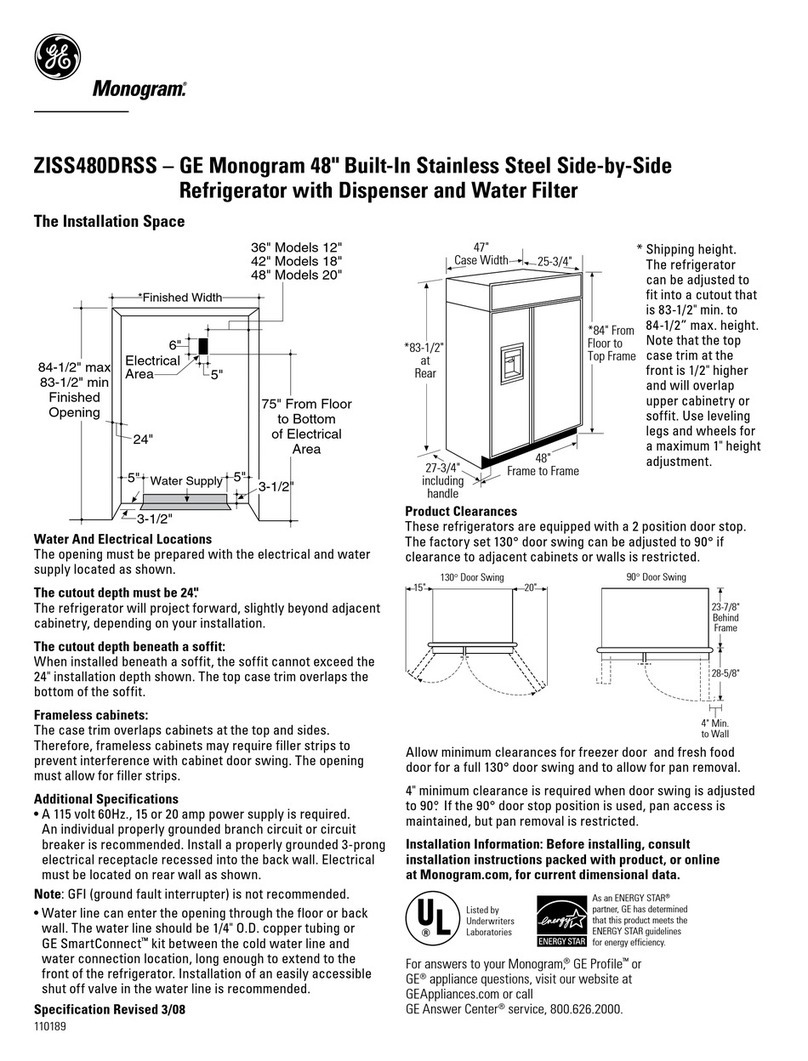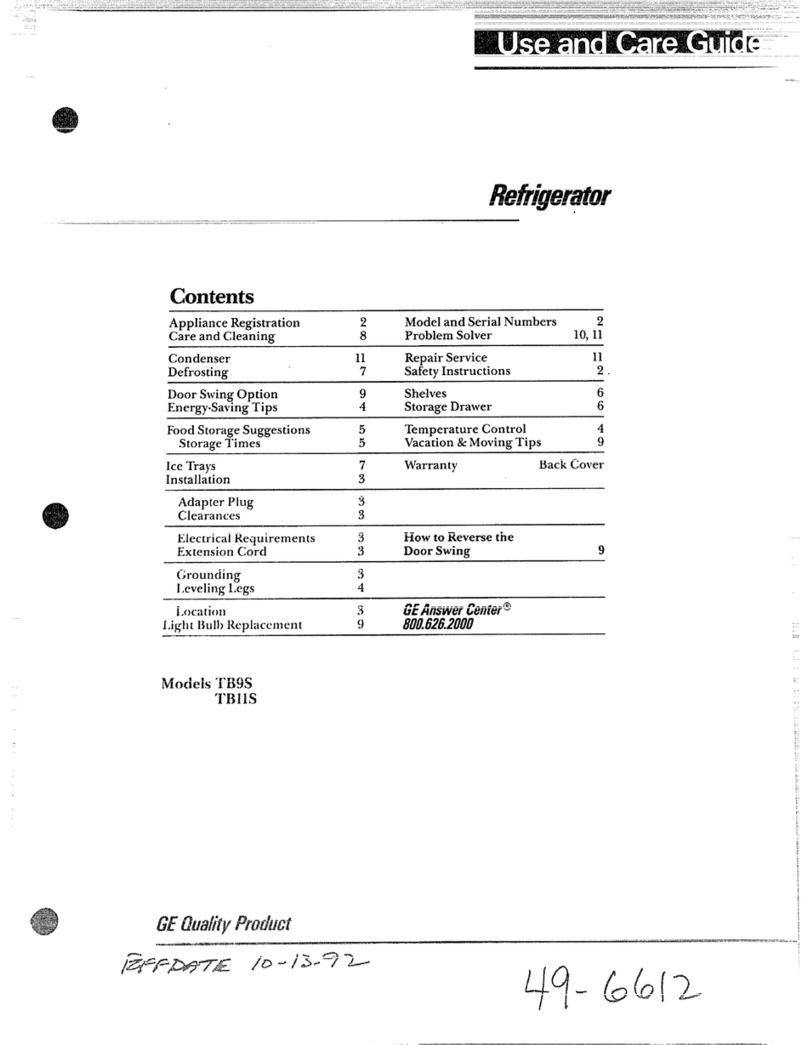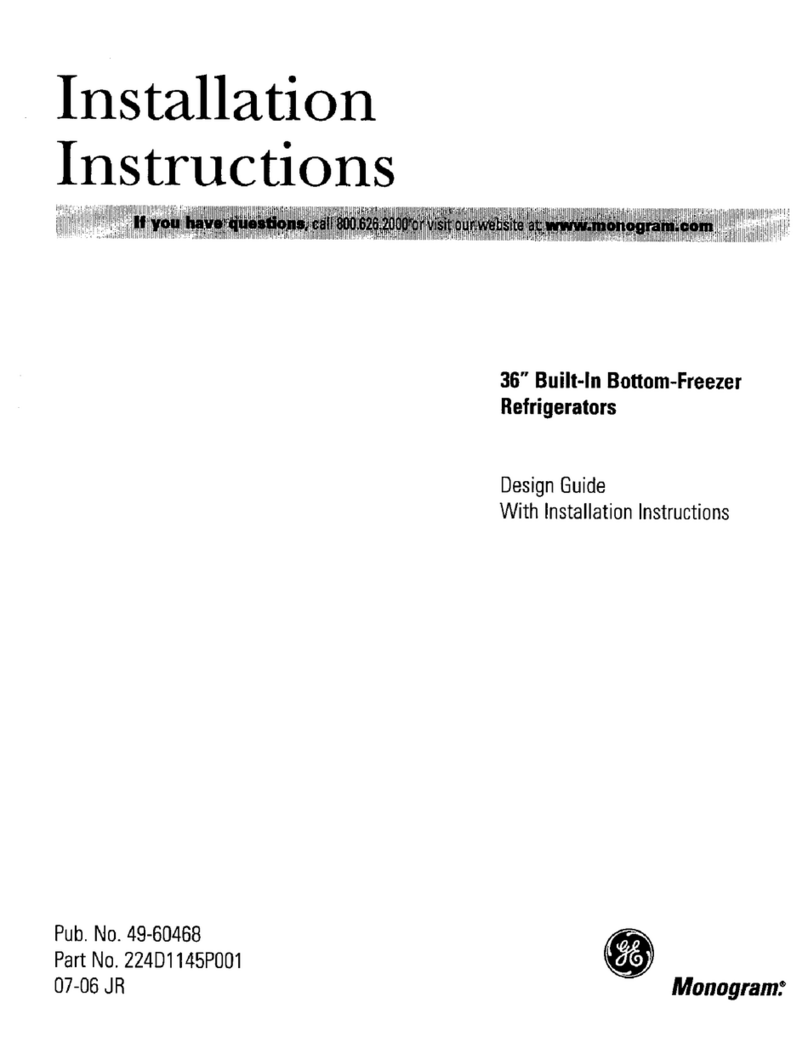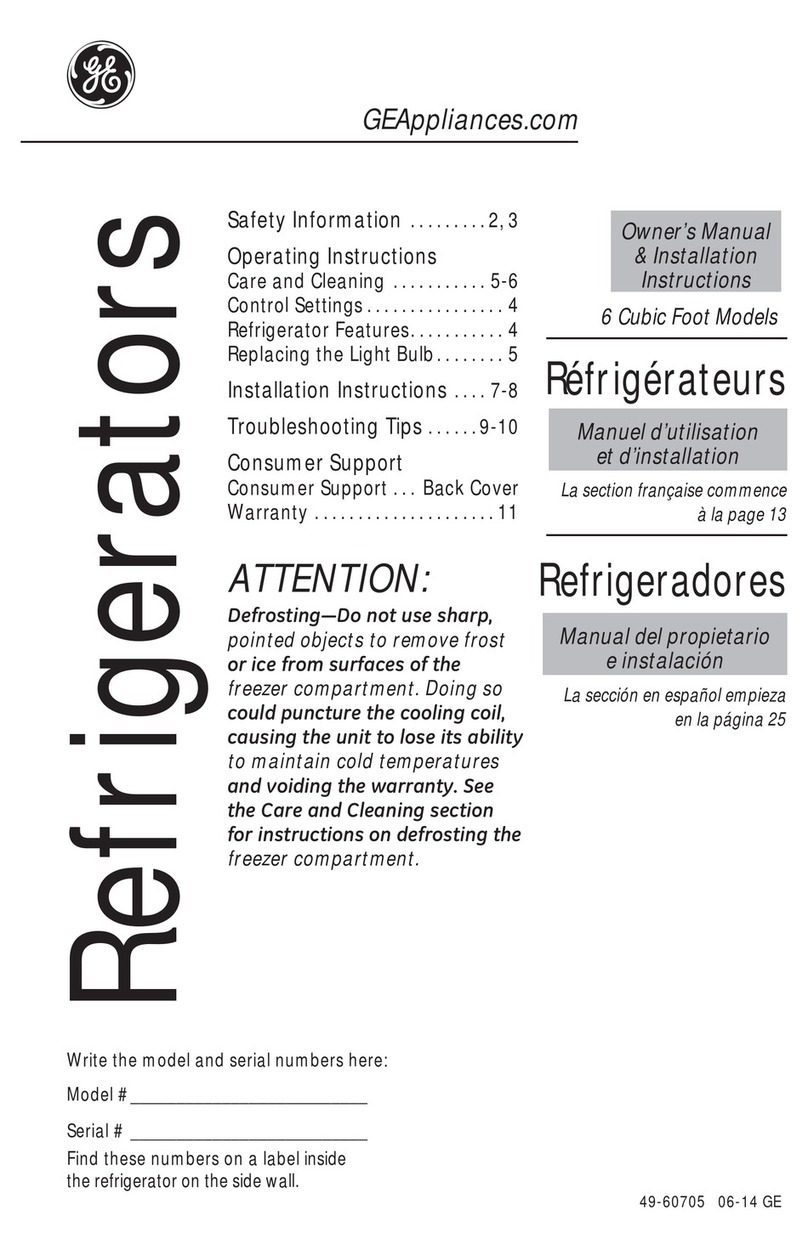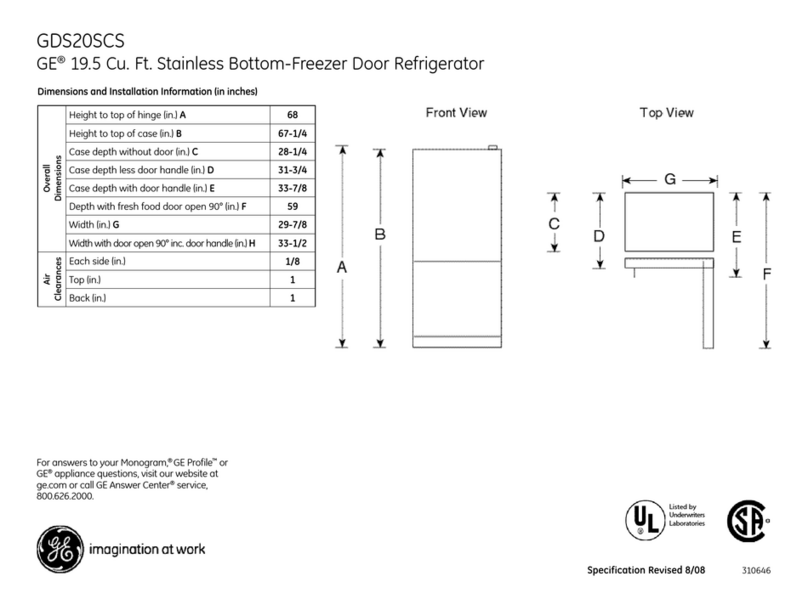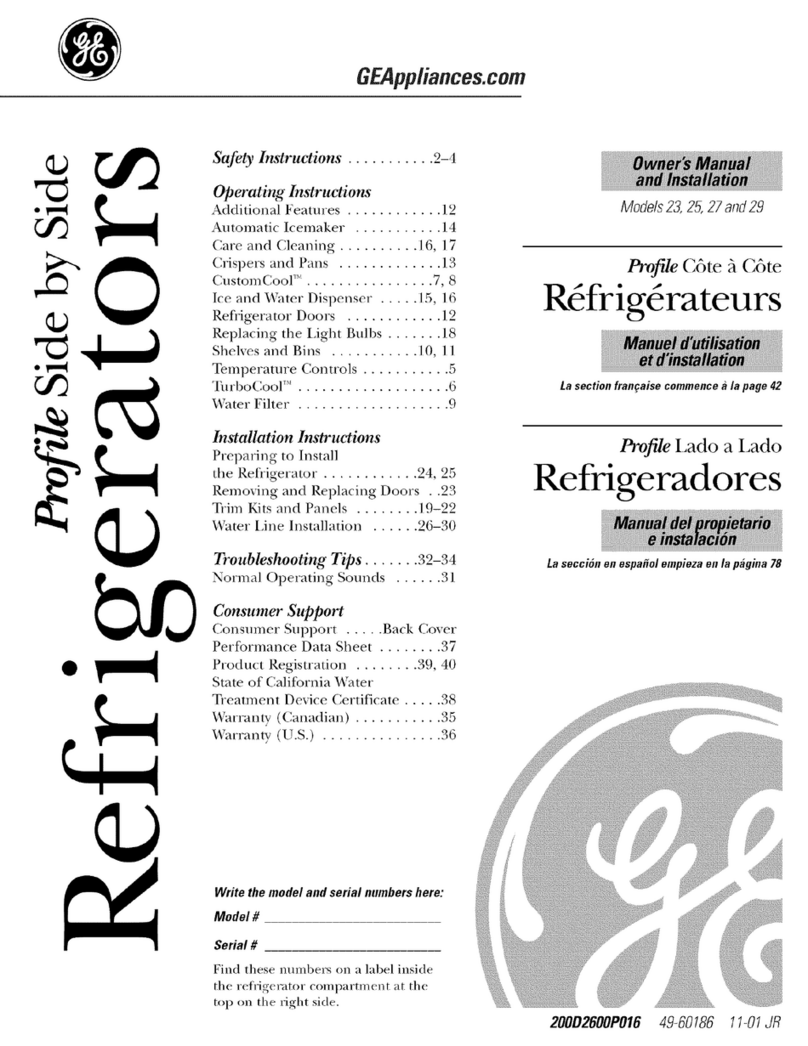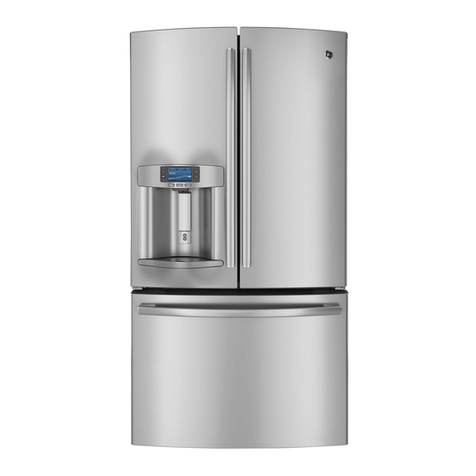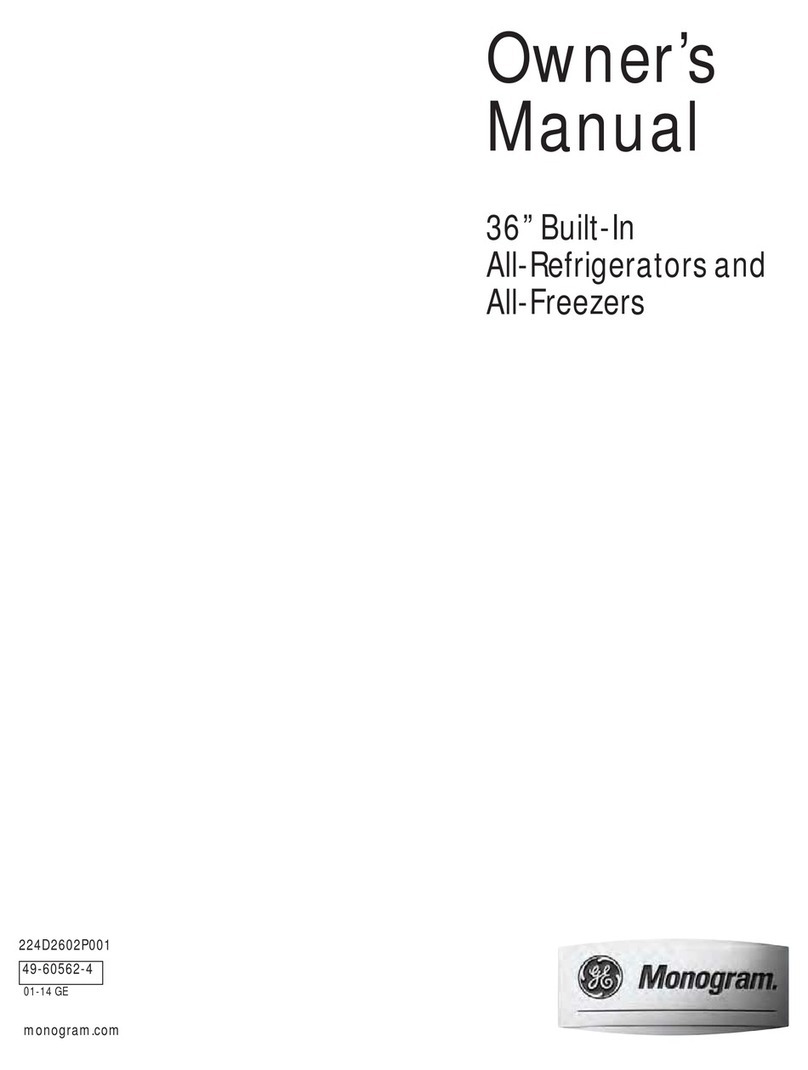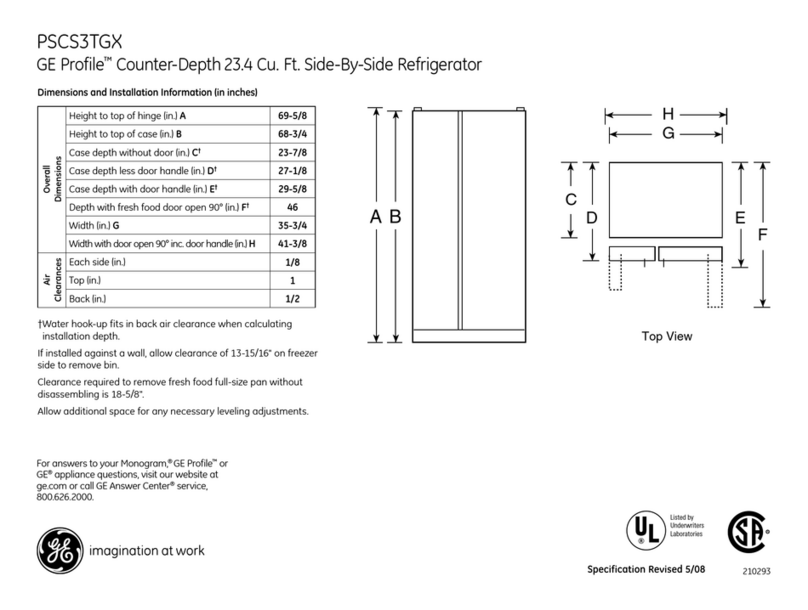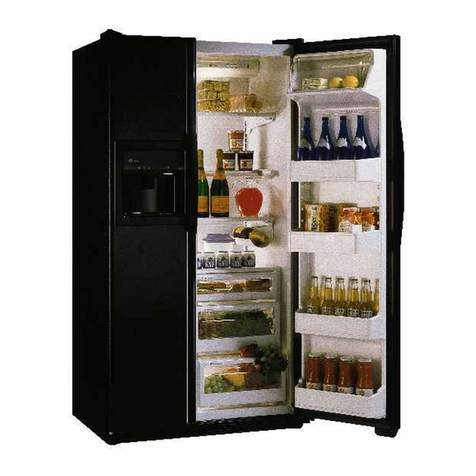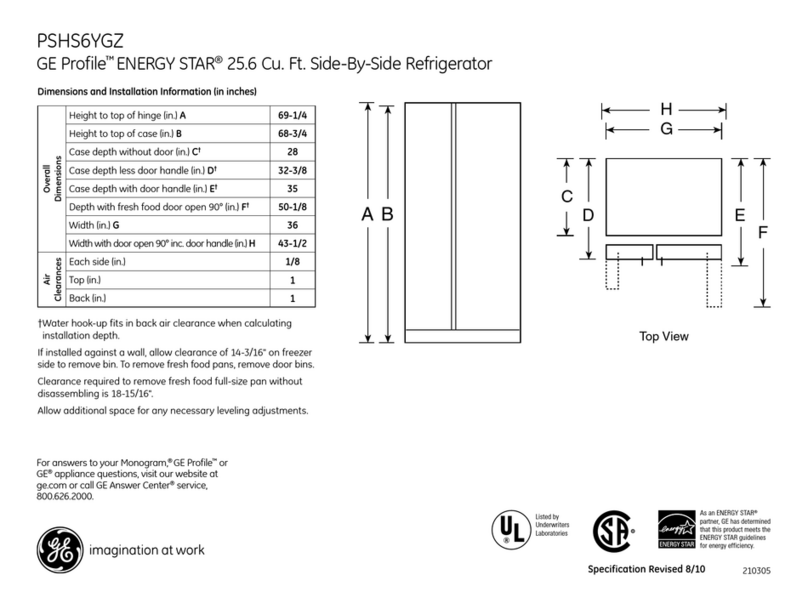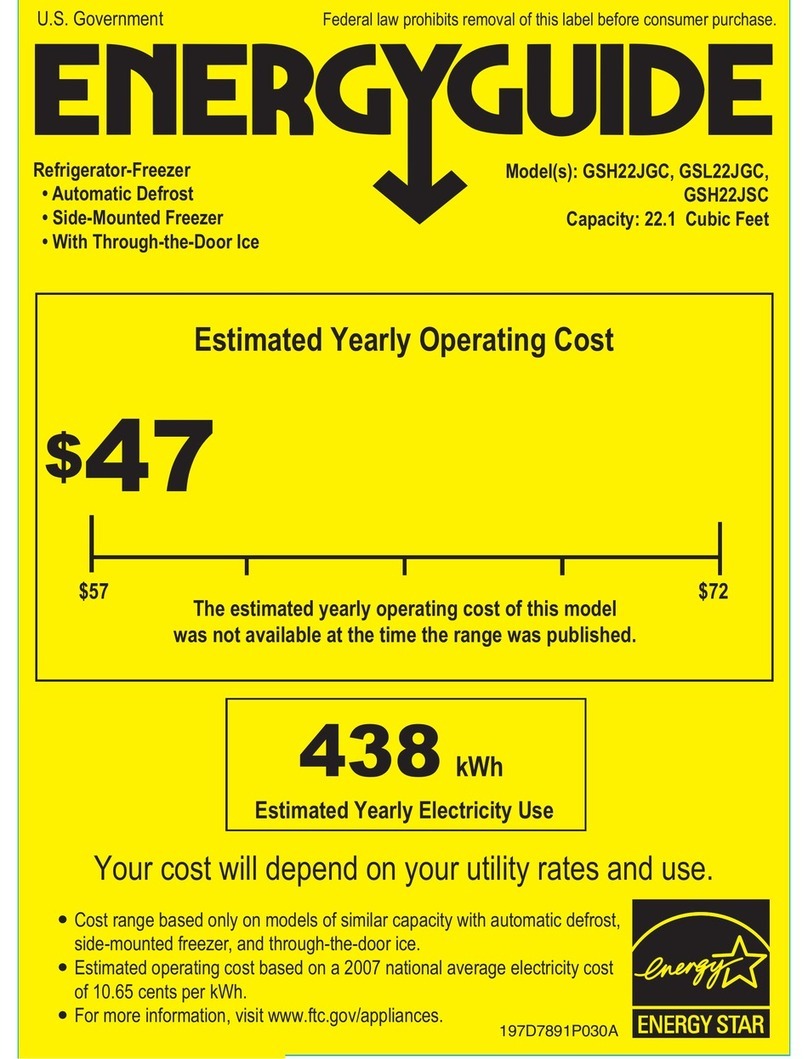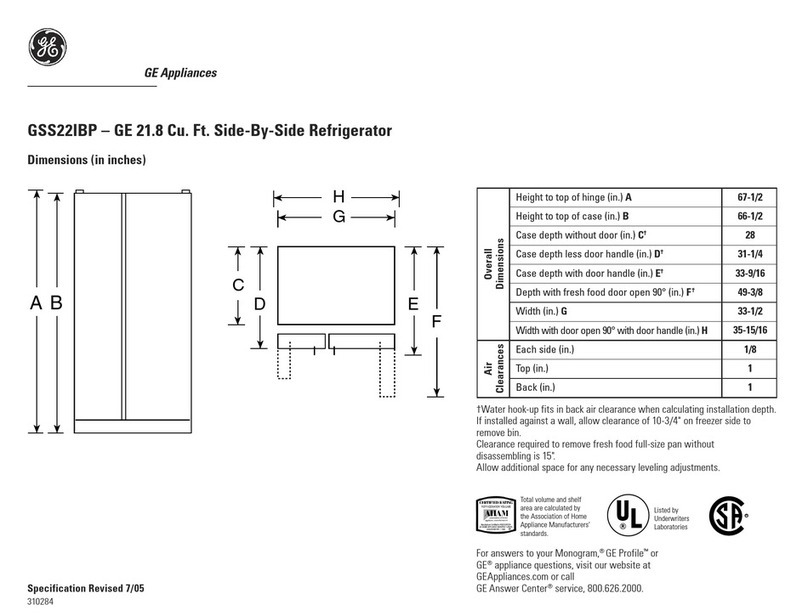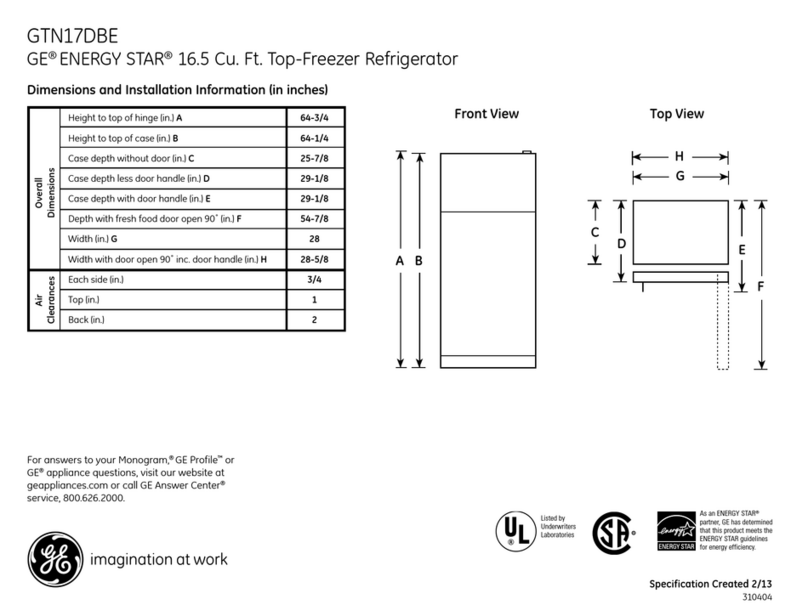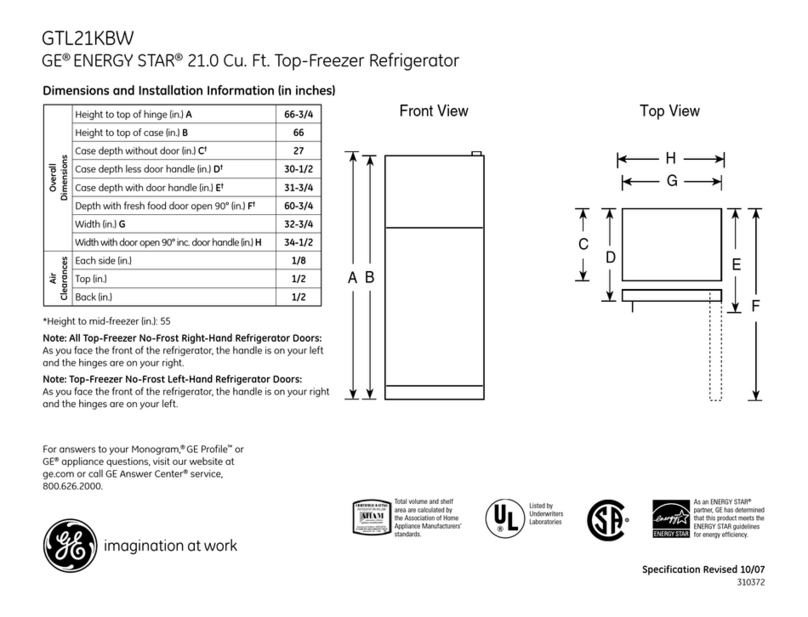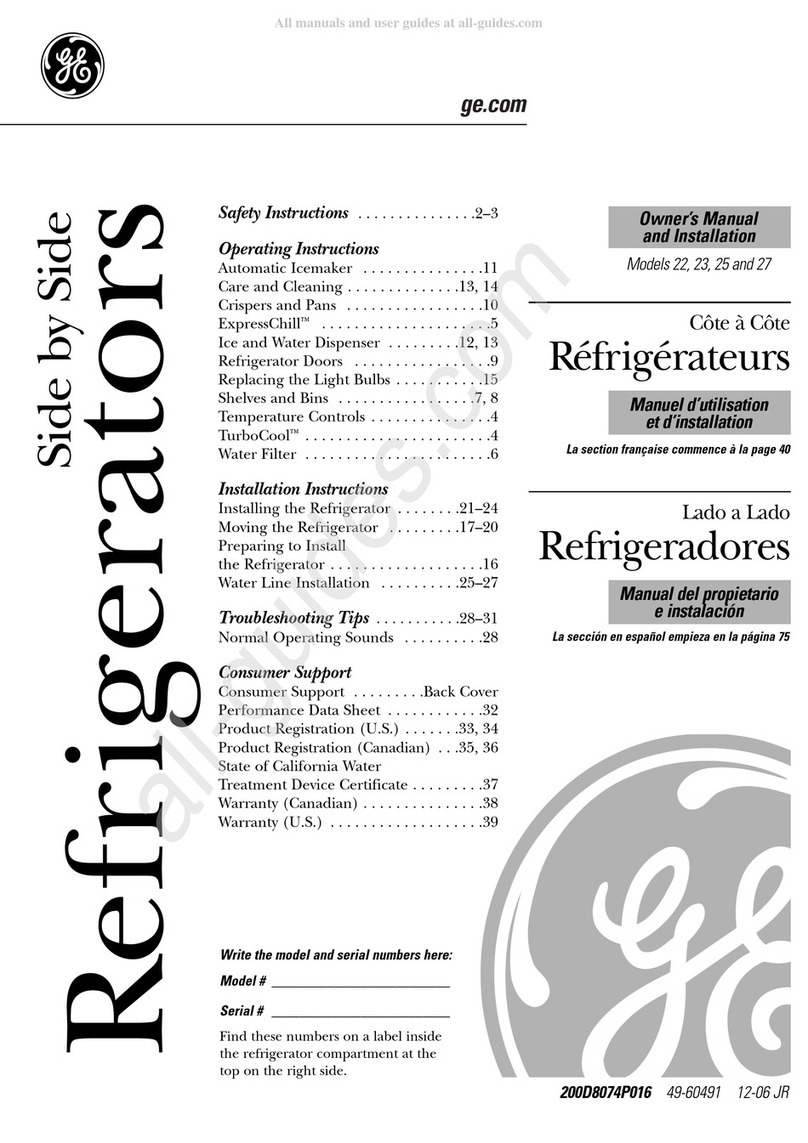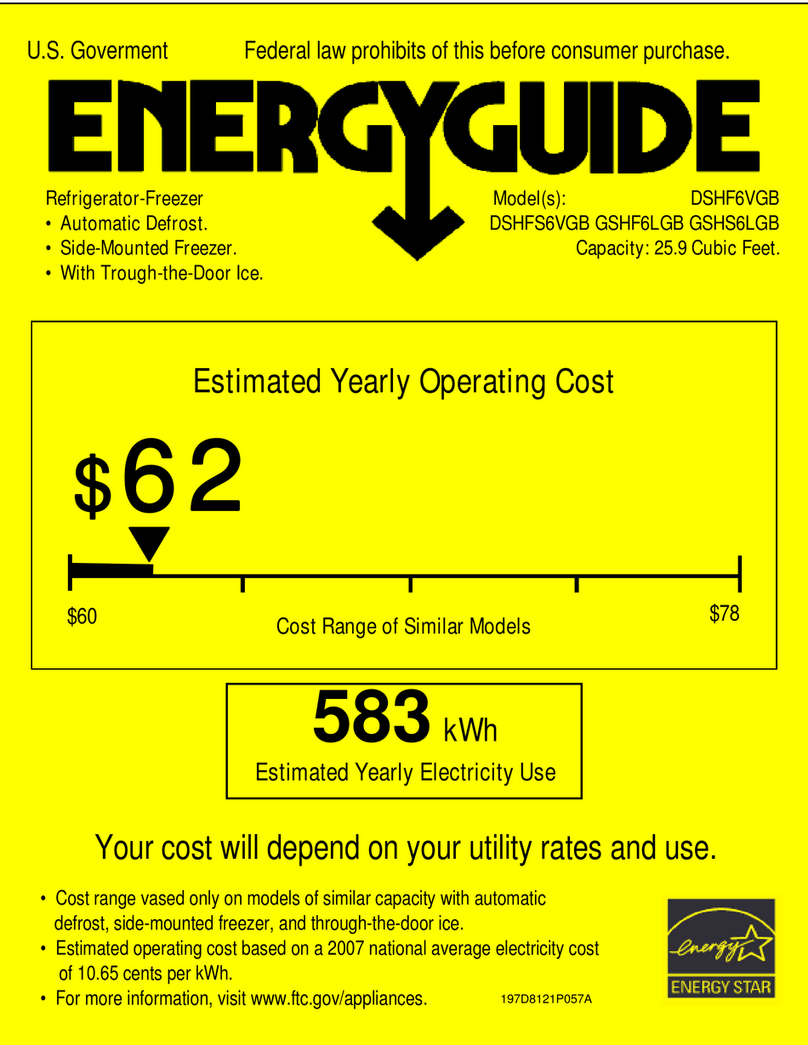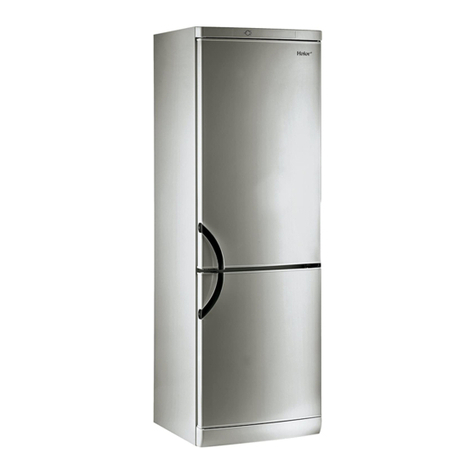Food Storage Suggestions
Suggested storage times*
Eatingquality drops REFRl&’RATOR
after time shown 35o ;T400F.
FreshMeats DAYS
Roasts (Beef &Lamb). . . . . 3to 5
Roasts (Pork &Veal). . . . . . 3to5
Steaks (Beef) . . . . . . . . . . . 3t05
Chops (Lamb) . . . . . . . . . . . 3t05
Chops (Pork) . . . . . . . . . . . 3t05
Ground &Stew Meats. . . . . 1to 2
Variety Meats . . . . . . . . . . . lto2
Sausage (Pork) . . . . . . . . . . lto2
Processw!Wats -
Bacon . . . . . . . . . . . . . ...7
Frankfurters . . . . . . . . . ...7
Ham (Whoie) . . . . . . . . ...7
Ham (Half) . . . . . . . . . . . ..3to5
Ham (Slices) . . . . . . . . . . . . 3
Luncheon Meats . . . . . . . . . 3t05
Sausage (Smoked) . . . . . . . . 7
Sausage (Dry& Semi-Dry) . . . 14t021
CookedMeats
Cooked
Meats and
Meat Dishes . . . . . . . . . . 3t04
Gravy &Meat Broth . . . . . . . lto2
FreshPoultry
Chicken &Turkey (Whole) ... lto2
Chicken (Pieces) . . . . . . . . . lto2
Turkey (Pieces) . . . . . . . . . . lto2
Duck& Goose (Whole).. lto2
Giblets . . . . . . . . . . . . . . . . lto2
CookedPoultry
Pieces (Covered with Broth) lto2
Pieces (Not Covered) . . . . . . 3t04
Cooked Poultry Dishes ..... 3t04
Fried Chicken . . . . . . . . . . . 3t04
FRE!!ZER
::F.
MONTHS
6to 12
4t08
6to 12
6t09
3t04
3t04
3t04
lto2
1
&
lto2
lto2
lto2
Freezing
notrecom-
mended.
2t03
2t03
12
9
:
3
6
1
4t06
4
(Otherthanformeats& poultry) FREEZER
Most fruits andvegetables. . . . . . . ..8-12 months
Lean fish . . . . . . . . . . . . . . . . . . . . . .6-8 months
Fatty fish, rolls and breads,
soups, stew, casseroles. ........2-3 months
Cakes, pies, sandwiches,
Ieft-overs (cooked),
Ice cream (original carton). ......1 month max.
IWvtechniquesareconstantlybeingdewloped.
Consultthe College or County Extension
Service or your local Utility Company for the
latestinformationonfreezingand storingfoods.
*U.S. Department ofAgriculture
Meats, fish and poultry purchased
from the store vary in quality and
age; consequently, safe storage
time in your refrigerator will vary.
Tostore unfrozen meats,+lsh and
poultry:
●Alwaysremove store wrappings.
sRewrap in foil, film or wax paper
and refrigerate immediately.
.. . -., .
Tostore cheese, wrap well with
wax paper or aluminum foil, or put
in aplastic bag.
●Carefidly wrap to expel air and
help prevent mold.
●Store pre-packaged cheese in its
own wrapping if you wish.
Tostore vegetables, use the
vegetable drawers—they’ve been
designed to preserve the natural
moisture and freshness of produce.
●Covering vegetables with armi S!
towel helps maintain crispness.
●As afurther aid to freshness,
pre-packaged vegetables can be
stored in their original wrapping.
Note:Special@eshfood compa~ent
drawers (onmodels so equipped)
make it unnecessary to wrap certain
foods which they’vebeen designed
topreserve. Zhese drawers are
described onpage 8.
Tostore ice cream-Fine-quality
ice cream, with high cream
content, will normally require
slightly lower temperatures than
more “airy” already-packaged
brands with low cream content.
.Itwfi be necessary toex~riment to
determine the freezer compartment
location and temperature control
setting to keep your ice cream at
the right serving temperature.
●The rearofthe freezercompartment
is slightly colder than the front.
Tips on freezing foods
There are three essential
requirements for efiicient home
freezing:
1. Initial quality. Freeze only
top-quality foods. Freezing retains
quality and flavor; it cannot
improve quality.
2. Speed. The quicker fruits and
vegetables are frozen after picking,
the better the frozen product will
be. You’llsavetime, too, with less
culling and sorting to do.
3. Proper packaging. Use food
wraps designed especially for
freezing.
6
... , . .
Tofreeze meat, fish and poultry,
wrap well in freezer-weight foil (or
other heavy-dutywrapping material)
forming it carefully to the shape of
the contents. This expels air. Fold
and crimp ends of the package to
provide agood, lasting seal.
Don’t refreeze meat that has
completely thawed; meat, whether
raw or cooked, can be frozen
successful yonly once.
Limit freezing of fresh (unfrozen)
meats or seafoods to number of
pounds at atime as follows:
TFX19, TFX20 . . . . ...20 pounds
TFX22 ..............21 pounds
TFX24 ..............26 pounds
For convenience...
●Store all like things together. This
not only savestime, but electricity—
because you can find foods faster.
●Place the oldest items up front so
they can be used up promptly.
●Use shelves on the door for most \
often used sauces and condiments.
●Use the meat drawer, if your
model has one, for meats you do
not freeze.
Tosavemoney in energy
and food costs:
●Place most perishable items
toward the rear of the top shelf as
they will stay coldest in this part
ofthe fresh food compartment.
●Cover moist foods with tight lids,
plastic film or foil.
●Leaf vegetables and fruits placed
in storage drawers will last longer
when stored in closed plastic
containersor wrapped inplastic fdm.
●Do not overload your fresh food
or freezer compartment with alot
of warm food at once.
●Open the door the fewest times
possible to saveelectrical energy.
●When going out oftown for
severaldays,leaveas fewperishables
as possible in refrigerator. If your
refrigerator has an icemaker, set the
icemaker to the OFF position and
shut off wat& to the refrigerator.


